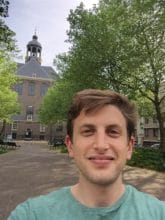
Every city faces similar social problems. No matter where you go, certain groups or neighborhoods struggle with intergenerational poverty, low educational attainment, poor health, crime, and other issues. National and local policies may reduce the severity of these problems, but there’s a growing recognition that top-down, technocratic approaches to these challenges aren’t doing enough for those that are affected.
Might social problems be better addressed from the bottom up, by individuals and community-based groups that have a better sense of what their neighborhoods and fellow citizens need? Perhaps. The issue is that community leaders and organizations often lack the resources, relationships, and platforms necessary to operate at a meaningful scale. How can governments most effectively galvanize citizen action and leverage residents’ expertise, energy, and creativity in tackling tough social problems?
Amsterdam—a city with an extraordinary tradition of bottom-up action—has recently taken an interesting approach to this question. Here, the “triple helix” model of public action—the notion that government, the private sector, and academia should work together to solve problems—is old news. Instead, it’s all about achieving the “quadruple helix,” which seeks to activate citizens themselves as critical elements of the larger problem-solving equation.
This approach was intriguing enough for the European Union to name Amsterdam the “Innovation Capital of Europe” in 2016. The distinction also came with a prize of €1,000,000. What did the city do with its winnings? It created a social innovation competition where citizens and community-based groups working on issues like education, workforce development, and public health were invited to apply for funding and a spot in what is essentially a social innovation accelerator program. City government handed off the competition design, selection, and administration process to a consortium of heavy-hitting civic institutions, including the Amsterdam Economic Board (my employer), the Amsterdam Institute for Advanced Metropolitan Studies, Kennisland, the Waag Society, and Pakhuis de Zwijger.
The initiative, “Maak je Stad!” (Make Your City!), has made quite the splash. It just recently announced its winners and kicked its accelerator program into gear. 37 groups were selected out of 475 applicants, each being awarded between €5,000 and €20,000 to help expand operations and capacity. The initiatives are wide ranging—there’s “School Makandra,” a peer-to-peer weekend learning program in the southeastern part of the city. There’s “The Power of Unity,” an initiative that helps prepare young people for the construction trades while renovating rundown buildings. There’s “Bloom and Grow,” an organization that provides environmental and agricultural education to vulnerable women. The list goes on.
A few reflections on this approach to stimulating bottom-up action and leveraging communities themselves to address social problems.
First, this process demonstrates the tremendous value of having a strong network of civic institutions in your city. An unconventional initiative like this could never be run from within municipal government, if only to prevent the appearance of political conflicts of interest. Cities with locally-focused, boundary-pushing civic organizations have a huge advantage in bringing residents into the problem solving fold.
Second, this effort shows the importance of building bridges between people and government. Local government may be closest to the people, for communities themselves, City Hall can feel as remote as a national legislature. To create change, citizens need to feel comfortable with “the system,” and it really helps to have relationships with folks who control the levers of power. A significant chunk of the Maak je Stad! accelerator program is devoted to fostering relationships between the winning organizations and the relevant departments and individuals in municipal government.
Third, Maak je Stad is a good reminder of the incentivizing power of public recognition. Considering its very modest size, it’s pretty incredible that nearly 500 individuals and organizations applied for this program. Clearly there’s a lot of latent demand among community groups for more funding and support, but in some ways, it seems like the opportunity for public distinction was equally motivating. By making this a high-profile, well-publicized competition, the city was able to generate serious enthusiasm and participation.
On both sides of the Atlantic, many people seem to have lost faith in the ability of national institutions to solve social problems. Maybe it’s time to think on a smaller scale. With Maak je Stad, Amsterdam has shown what is possible when the city takes seriously its role as a facilitator of bottom-up problem solving.
Ross Tilchin is a visiting fellow at the Amsterdam Institute for Social Science Research and a member of the strategy team at the Amsterdam Economic Board. Before arriving in Amsterdam, Ross worked as a researcher at the Brookings Institution, a nonprofit research organization in Washington, D.C., where he specialized in urban economic development and a wide range of issues related to cities. You can read his previous blog here.
